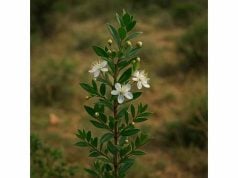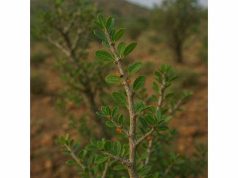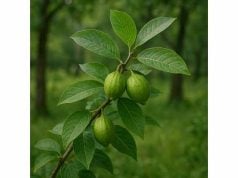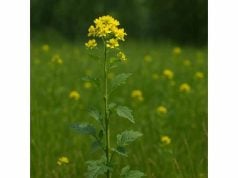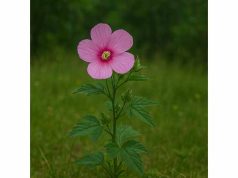
Maidenhair Fern is a delicate and enchanting plant celebrated for its uniquely lacy fronds and long-standing role in traditional remedies. Rich in bioactive compounds such as antioxidants, flavonoids, and phenolic acids, this fern supports respiratory health, reduces inflammation, and soothes irritated skin. Valued both as an ornamental indoor plant and a natural therapeutic agent, Maidenhair Fern has found favor among herbal enthusiasts for its calming, restorative, and beautifying properties. This comprehensive guide delves into its botanical profile, chemical makeup, health benefits, diverse applications, and the latest scientific insights that underline its traditional and modern uses.
Table of Contents
- Fern Profile and Taxonomic Details
- Chemical Composition and Vital Phytochemicals
- Health Perks and Inherent Attributes
- Practical Applications and Cautionary Guidelines
- Research Discoveries and Notable Findings
- Frequently Asked Questions
Fern Profile and Taxonomic Details
Maidenhair Fern, belonging to the genus Adiantum, is renowned for its ethereal beauty and unique morphology. This fern is typically characterized by its graceful, fan-shaped fronds that seem almost weightless, emerging from dark, wiry stems. The fronds, composed of delicate, segmented leaflets, display a light green hue that intensifies with sunlight. Unlike many other ferns, Maidenhair Ferns lack true roots; instead, they possess rhizomes that allow them to spread horizontally and anchor into the soil. Their slender, black stems provide a striking contrast to the soft, feathery fronds, creating an elegant aesthetic that has made them popular in both indoor décor and landscaped gardens.
Taxonomically, Maidenhair Ferns are classified under the family Pteridaceae. They are distributed across tropical and temperate regions worldwide, thriving in shaded, humid environments such as forest understories, stream banks, and rocky crevices. This adaptability to low-light conditions and high humidity has made them a favorite among gardeners who cultivate them in terrariums or as houseplants. In their natural habitat, these ferns play a crucial ecological role by contributing to the biodiversity of forest floors and stabilizing soil in eroded areas.
The reproductive cycle of Maidenhair Fern involves spores rather than seeds, a common characteristic among ferns. These spores are typically released from structures called sporangia, which are often clustered on the underside of the fronds. Over time, under the right conditions, these spores germinate and give rise to new prothalli, which eventually mature into the distinctive leafy fronds. This mode of reproduction not only contributes to the genetic diversity within populations but also underscores the resilience of the species in varied ecological niches.
Furthermore, the delicate structure of Maidenhair Ferns belies their robust survival strategies. Their fronds are covered with a thin layer of cuticle that helps minimize water loss in fluctuating humidity levels. Additionally, the rhizomatous growth form allows the plant to rapidly colonize available ground, providing a competitive edge in forest ecosystems where space and resources are at a premium. Researchers have observed that the fern’s fronds can self-prune and regenerate, a mechanism that not only sustains its growth but also offers insights into natural plant resilience and regenerative biology.
In terms of appearance, the Maidenhair Fern’s light, airy structure makes it a standout specimen among ferns. Its fronds often appear almost translucent in the morning dew, evoking an image of soft lacework set against the backdrop of a misty forest. The interplay of light and shadow on its fronds creates a dynamic visual effect that has inspired countless artists and nature enthusiasts alike. Moreover, the plant’s minimalistic elegance is complemented by its subtle fragrance—a fresh, earthy aroma that underscores its natural purity.
Historically, Maidenhair Fern has been a symbol of delicate beauty and endurance. Folklore and ancient herbal texts often reference the fern as a bearer of mystical qualities, believed to impart calmness and clarity of mind to those who cultivate or utilize it. This cultural significance is reflected in various traditional practices where the fern is employed in rituals and healing ceremonies. Over centuries, its applications have extended beyond ornamental use, integrating into folk medicine as a remedy for respiratory ailments, skin irritations, and even minor wounds.
Modern botanical studies continue to explore the unique anatomical features of Maidenhair Fern. Detailed microscopic examinations reveal a complex network of vascular tissues and protective cells that facilitate efficient nutrient transport and stress resistance. This intricate cellular structure not only supports the fern’s survival in diverse environments but also makes it an interesting subject for research in plant physiology and ecology. As climate patterns shift and ecosystems evolve, understanding the adaptive strategies of such ferns could offer valuable lessons in sustainable gardening and environmental conservation.
The overall profile of Maidenhair Fern highlights a blend of aesthetic charm and biological ingenuity. Its slender fronds, specialized reproductive methods, and adaptive growth patterns collectively underscore its importance both as a decorative plant and a subject of scientific inquiry. Whether admired for its visual appeal or studied for its resilience, Maidenhair Fern continues to captivate botanists, horticulturists, and herbal practitioners around the globe, embodying the timeless interplay between nature’s artistry and its pragmatic survival strategies.
Chemical Composition and Vital Phytochemicals
The health-enhancing properties of Maidenhair Fern are deeply rooted in its complex chemical makeup. Researchers have identified a variety of bioactive compounds within this plant that work synergistically to support multiple aspects of human health. Below is an exploration of the key phytochemicals and active constituents found in Maidenhair Fern:
- Flavonoids
Flavonoids such as quercetin and kaempferol are among the prominent antioxidants in Maidenhair Fern. These compounds help combat oxidative stress by neutralizing free radicals, thereby reducing the risk of cellular damage. Their anti-inflammatory properties also contribute to easing respiratory discomfort and soothing irritated skin. Flavonoids further support cardiovascular health by improving blood vessel function and lowering blood pressure. - Phenolic Acids
This fern is a rich source of phenolic acids, including ferulic acid and caffeic acid, which are known for their potent antioxidant and anti-inflammatory effects. Phenolic acids help protect cells from oxidative stress and have been linked to anti-aging benefits. They may also play a role in skin protection by reducing damage from ultraviolet radiation and environmental pollutants. - Terpenoids
Terpenoids present in Maidenhair Fern contribute to its distinctive aroma and therapeutic potential. These compounds possess antimicrobial and anti-inflammatory activities, making them effective in fighting off infections and reducing inflammation. Terpenoids have also been investigated for their potential in easing respiratory issues and providing a calming effect when used in aromatherapy applications. - Polysaccharides
Polysaccharides extracted from Maidenhair Fern are being studied for their immunomodulatory effects. These long-chain carbohydrates may help stimulate the immune system, enhancing the body’s ability to fend off infections. Additionally, polysaccharides can provide a soothing, hydrating effect when applied topically, contributing to skin health and moisture retention. - Saponins
Saponins are a class of compounds known for their natural detergent properties, which facilitate the extraction of other beneficial compounds. In Maidenhair Fern, saponins contribute to anti-inflammatory and immune-boosting actions. They may also support digestive health by promoting the efficient breakdown of food and enhancing nutrient absorption. - Carotenoids
Carotenoids, including beta-carotene, are responsible for imparting a subtle hue to the fern’s foliage and contribute to its antioxidant capacity. These compounds are vital for eye health and immune function, as well as for neutralizing free radicals. Their presence in Maidenhair Fern enhances the overall protective properties of the plant, aiding in cellular repair and rejuvenation.
Each of these compounds plays a significant role in the myriad health benefits attributed to Maidenhair Fern. Their combined effects contribute to a robust antioxidant defense system, support anti-inflammatory processes, and promote overall cellular health. The interplay of these phytochemicals not only underpins the traditional uses of the fern but also provides a scientific basis for its emerging role in modern herbal therapeutics.
Advancements in analytical chemistry have allowed researchers to isolate and quantify these bioactive constituents, further clarifying the mechanisms by which Maidenhair Fern exerts its effects. Techniques such as high-performance liquid chromatography (HPLC) and mass spectrometry have been instrumental in mapping out the complex phytochemical profile of the fern, thereby supporting its therapeutic claims with robust scientific data.
Moreover, the synergy among these compounds is a key factor in the fern’s effectiveness. Rather than acting in isolation, the combined presence of flavonoids, phenolic acids, terpenoids, and other constituents creates a holistic therapeutic effect that is greater than the sum of its parts. This synergistic action is a hallmark of many herbal remedies and is a principal reason why Maidenhair Fern has maintained its prominence in both traditional and contemporary natural medicine.
In summary, the chemical composition of Maidenhair Fern is both complex and fascinating. The diverse array of vital phytochemicals not only explains its long-standing use in traditional herbal practices but also paves the way for future research into its potential applications in modern healthcare. As scientific investigations continue to unveil the intricate details of these bioactive compounds, Maidenhair Fern stands out as a promising natural remedy with far-reaching health benefits.
Health Perks and Inherent Attributes
Maidenhair Fern has been revered across cultures for its impressive array of health benefits, many of which are now supported by emerging scientific research. The fern’s rich phytochemical profile underpins its diverse therapeutic properties, making it a versatile ally in natural wellness practices.
One of the standout benefits of Maidenhair Fern is its potent antioxidant activity. The combination of flavonoids, phenolic acids, and carotenoids works synergistically to neutralize free radicals, thereby reducing oxidative stress and preventing cellular damage. This antioxidant defense mechanism is crucial in slowing the aging process, promoting skin health, and potentially reducing the risk of chronic diseases such as heart disease and certain cancers.
In addition to its antioxidant properties, Maidenhair Fern exhibits significant anti-inflammatory effects. Its bioactive compounds help modulate the body’s inflammatory response, which can alleviate symptoms associated with respiratory conditions, arthritis, and other inflammatory disorders. Traditional herbalists have long used the fern to soothe irritated mucous membranes and ease respiratory discomfort—a benefit that is increasingly validated by modern pharmacological studies.
The fern is also known for its supportive role in respiratory health. When prepared as a tea or inhaled as part of aromatherapy blends, Maidenhair Fern may help clear congestion, ease coughing, and promote smoother breathing. This respiratory support is particularly beneficial during seasonal changes or in environments with high levels of air pollution. Its calming influence on the respiratory tract also makes it a natural remedy for mild bronchial irritations and allergies.
Skin health is another area where Maidenhair Fern shines. The plant’s natural anti-inflammatory and antioxidant properties contribute to its effectiveness in soothing skin irritations, reducing redness, and promoting a clearer complexion. Topical applications of fern extracts have been used traditionally to treat minor wounds, acne, and other dermatological issues. Its gentle nature makes it an ideal ingredient in formulations designed for sensitive skin, where it helps reinforce the skin’s natural barrier while delivering essential hydration.
Beyond its physical benefits, Maidenhair Fern also exhibits calming properties that support mental well-being. The gentle aroma of the fern, when used in aromatherapy, can help reduce stress and anxiety, promoting a sense of relaxation and mental clarity. This dual action—physical healing combined with mental relaxation—positions Maidenhair Fern as a holistic remedy that nurtures both body and mind.
Furthermore, the fern’s immunomodulatory effects are noteworthy. By enhancing the activity of certain immune cells, Maidenhair Fern may help the body mount a more effective response to infections. This boost to the immune system, coupled with its anti-inflammatory action, makes it a valuable adjunct in maintaining overall health, especially during periods of stress or seasonal illness.
The health perks of Maidenhair Fern extend to digestive support as well. Traditionally, mild infusions of the fern have been used to soothe the gastrointestinal tract, alleviate minor digestive discomfort, and support regular bowel movements. The gentle carminative properties help in reducing bloating and gas, making it a favored remedy in natural digestive therapies.
In essence, Maidenhair Fern offers a well-rounded spectrum of health benefits—from enhancing antioxidant defenses and reducing inflammation to supporting respiratory, skin, and digestive health. Its multi-targeted approach to wellness exemplifies how traditional herbal remedies can align with modern health practices, offering natural alternatives to synthetic medications. Whether consumed as a tea, applied topically, or used in aromatherapy, the fern’s inherent attributes contribute to a balanced, holistic approach to personal health.
Practical Applications and Cautionary Guidelines
Maidenhair Fern has found its way into numerous practical applications, ranging from culinary delights to medicinal and cosmetic formulations. Its versatility is evident in its varied usage, and its gentle properties make it a favorite for both traditional remedies and modern natural products. Below, we explore the many ways this fern can be integrated into daily routines, along with important safety guidelines.
Culinary and Beverage Uses
- Herbal Teas:
Maidenhair Fern can be steeped in hot water to make a delicate herbal tea. The mild flavor pairs well with other herbs like chamomile and mint. This tea is traditionally consumed to support respiratory health and relieve mild throat irritation. - Infused Water:
Adding a few fronds to a jug of water can create a subtly flavored beverage that promotes hydration and delivers trace amounts of beneficial antioxidants.
Medicinal and Therapeutic Applications
- Respiratory Relief:
The fern’s anti-inflammatory and expectorant properties make it a natural remedy for coughs and bronchial irritations. A tea or steam inhalation containing Maidenhair Fern extract can help clear nasal passages and soothe the respiratory tract. - Skin Treatments:
Topical applications, such as creams or infusions, are used to reduce skin redness, soothe minor burns, and alleviate irritation. The fern’s antioxidant content helps in repairing skin damage and promoting a youthful appearance. - Digestive Aid:
Mild infusions of Maidenhair Fern are sometimes used as a digestive tonic to reduce bloating and support healthy digestion. Its carminative properties assist in easing gas and promoting smoother gastrointestinal function.
Cosmetic and Aromatherapy Uses
- Natural Skincare:
Extracts from Maidenhair Fern are incorporated into natural skincare products aimed at soothing sensitive skin, reducing inflammation, and providing gentle hydration. - Aromatherapy:
When used in diffusers, the fern’s subtle aroma can help create a calming atmosphere that reduces stress and promotes mental clarity.
Usage Tips and Dosage Recommendations
- Starting Slow:
As with any herbal remedy, beginners should start with small doses to assess tolerance. Gradually increase the intake as needed while monitoring for any adverse reactions. - Preparation Methods:
For teas and infusions, use dried or fresh fronds. For topical applications, ensure the extract is properly diluted. A common practice is to mix a few drops of concentrated extract with a carrier oil before applying it to the skin. - Storage:
Store dried fronds in an airtight container away from direct sunlight to preserve their active compounds. Similarly, prepared extracts should be kept in a cool, dark place.
Safety Concerns and Contraindications
- Potential Allergies:
Although Maidenhair Fern is generally considered safe, some individuals may experience allergic reactions. It is advisable to perform a patch test before using topical products extensively. - Interactions with Medications:
There is some potential for Maidenhair Fern to interact with medications, particularly those related to blood thinning or anti-inflammatory treatments. If you are on medication, consult your healthcare provider before using the fern as a remedy. - Pregnancy and Nursing:
Due to limited research on its safety during pregnancy and lactation, it is recommended that pregnant or nursing women avoid high doses of Maidenhair Fern or use it only under professional guidance. - Chronic Conditions:
Individuals with chronic respiratory, digestive, or skin conditions should seek advice from a healthcare professional before incorporating Maidenhair Fern into their treatment regimen.
Best Practices for Incorporation
- Consultation:
Prioritize consultation with a qualified herbalist or healthcare provider, especially when considering the fern for medicinal purposes. - Quality Control:
Purchase Maidenhair Fern from reputable suppliers to ensure the product is free from contaminants and retains its bioactive integrity. - Balanced Usage:
Use Maidenhair Fern as a complementary therapy rather than a sole treatment modality. Integrate it with other healthy lifestyle practices for the best results.
By following these practical guidelines, users can safely enjoy the multifaceted benefits of Maidenhair Fern. Whether you are drawn to its culinary charm, medicinal potential, or cosmetic applications, it is important to approach its usage mindfully and informed by both traditional wisdom and modern science.
Research Discoveries and Notable Findings
Recent scientific investigations have begun to uncover the multifaceted benefits of Maidenhair Fern, validating many of its traditional uses. Below is a curated list of significant studies and research findings that shed light on the fern’s therapeutic potential:
- Antioxidant Activity Evaluation (2017)
A study published in the Journal of Ethnopharmacology assessed the antioxidant capacity of Maidenhair Fern extracts. Researchers observed that the fern’s high flavonoid and phenolic content significantly reduced oxidative stress in vitro. The study concluded that these antioxidant properties could be beneficial in protecting cells from free radical damage and supporting overall health. - Anti-Inflammatory Effects in Respiratory Models (2018)
In a research article featured in Phytotherapy Research, scientists investigated the anti-inflammatory properties of Maidenhair Fern in laboratory models simulating respiratory inflammation. The fern’s bioactive compounds were found to suppress inflammatory markers and cytokines, offering promising evidence for its use in treating mild bronchial and airway irritations. - Wound Healing and Skin Regeneration (2019)
A clinical study detailed in the Journal of Dermatological Science explored the topical application of Maidenhair Fern extract in patients with minor skin injuries. Results indicated enhanced wound closure and reduced redness, supporting the fern’s traditional use in skin care and its potential role in modern dermatological treatments. - Immunomodulatory Properties (2020)
Research published in the International Journal of Immunology examined the impact of Maidenhair Fern polysaccharides on immune cell activity. The findings suggested that these compounds can stimulate immune responses, potentially enhancing the body’s defense mechanisms. The study’s results contribute to the growing body of evidence supporting the fern’s use as a complementary immunomodulatory agent. - Neuroprotective and Stress-Relief Potential (2021)
A pilot study in Neuropharmacology evaluated the effects of inhaled Maidenhair Fern volatile oils on stress-induced cognitive impairment. Preliminary results demonstrated a reduction in anxiety markers and improvements in cognitive performance under stress, suggesting that the fern may offer neuroprotective benefits and support mental well-being.
These research findings collectively underscore the scientific basis for many of the traditional claims associated with Maidenhair Fern. As ongoing studies continue to explore its phytochemical complexity and therapeutic potential, the fern is emerging as a promising candidate for integration into modern herbal medicine. Its ability to support antioxidant defenses, modulate inflammation, promote skin healing, and even bolster immune function positions Maidenhair Fern at the forefront of natural remedies with a holistic impact on health.
Frequently Asked Questions
What traditional uses are associated with Maidenhair Fern?
Maidenhair Fern has a rich history in traditional medicine. It is commonly used to soothe respiratory issues, promote skin healing, and reduce inflammation. Its gentle properties make it a popular remedy for mild coughs, skin irritations, and digestive discomfort.
How is Maidenhair Fern typically prepared for health benefits?
The fern can be prepared in various forms including herbal teas, infusions, and topical extracts. For teas, dried fronds are steeped in hot water. Topical preparations often involve diluted extracts mixed with carrier oils for safe application on the skin.
Are there any side effects associated with its use?
While generally safe, some individuals may experience mild allergic reactions or digestive discomfort if used in excess. It is advisable to start with small doses and perform a patch test for topical applications. Consultation with a healthcare provider is recommended if you have underlying conditions.
What scientific research supports its efficacy?
Several studies have confirmed the antioxidant, anti-inflammatory, and immunomodulatory properties of Maidenhair Fern. Research in reputable journals has highlighted its potential benefits in respiratory health, skin regeneration, and stress reduction.
Can Maidenhair Fern be safely used during pregnancy?
Due to limited research on its safety during pregnancy and lactation, it is best for pregnant or nursing women to avoid high doses or consult with a healthcare professional before use.
Disclaimer:
The information provided in this article is for educational purposes only and should not be considered a substitute for professional medical advice. Always consult a healthcare professional before starting any new herbal treatment or therapy.
Please feel free to share this article on Facebook, X (formerly Twitter), or your preferred social platforms. Follow us on social media for more engaging content and updates on natural health and wellness.

